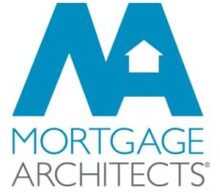With the spring housing market in full bloom and summer just around the corner, it’s the perfect time to buy a home. Despite skyrocketing real estate prices in the most sought-after housing markets like Calgary, Toronto and Vancouver, mortgage rates have never been more affordable. Today you can find a variable rate mortgage at the bargain basement of 2.00 percent, a steal of a deal historically speaking. This is in sharp contrast to the 1970’s and 1980’s, which saw homeowners walk after from their homes in droves when mortgage rates went above 20 percent.
When it comes to mortgages, there’s a lot of mortgage lingo to learn. While most people understand what a mortgage amortization and term are, fewer people seem to know mortgage rate lingo. There are three important rates every homeowner should know: posted rate, discount rate and qualifying rate.
The posted rate is the rate advertised be a bank. Similar to the sticker price on a new car, you should never take the posted rate. Instead you should try to negotiate the posted rate down to the lowest level possible. The lower mortgage rate you end up accepting is known as the discount rate. Last but not least, the qualifying rate is the rate used by mortgage lenders to determine the size of your mortgage.
Fixed vs. Variable Rate Mortgages
While variable mortgage rates may be lower than fixed mortgage rates, qualifying for a variable rate mortgage is another story. Once upon a time qualifying for a variable rate mortgage was no different than fixed. That all changed April 19, 2010, when the federal government decided to intervene in the housing market. In an effort to avoid a U.S. style housing crash, the government made it more difficult to qualify for variable rate mortgages (and fixed rate mortgage terms under five years). This was done to make sure homebuyers didn’t get in over their heads.
When you’re applying for a five-year fixed rate mortgage, what you see is what you get. Your qualifying rate is based on the mortgage rate you get from the bank. For example, if you get a five-year mortgage at 2.49 percent, your qualifying rate and how much you can borrow is based on that. Things are a little different with the five-year variable rate mortgage. With the variable rate mortgage, the qualifying rate is based on an average of the inflated posted rates of the big six banks. As we’ve seen, the posted rate can come back to haunt you on the mortgage penalty for fixed rate mortgage, but it also makes it harder to qualify for variable rate mortgages.
Let’s run through an example to show the difference between fixed and variable mortgages. If you purchased a home for $500,000 with 20 percent down, you’d be left with a mortgage of $400,000. If you chose a five-year fixed rate mortgage at 2.48 percent, your payment would be $1,788 per month, but if you chose a five-year variable rate mortgage at 2.25 percent (prime less 0.6 percent), your payment would be only $1,742 per month. But that’s not the end of the story.
Under the fixed rate mortgage, the qualifying rate would be 2.48 percent, but with the variable rate mortgage your qualifying rate would be based on an average of the posted rate of the big six banks. For example, if the average is 4.99 percent, you’d have to prove you could afford a mortgage payment of $2,324 per month. Does the variable rate mortgage still seem as appealing? The reason for the tougher qualifying rate is simple – the government wants to make sure you could handle a jump in interest rates. Even though interest rates may stay put or drop, you still have to prove you could handle a sudden jump.
With bond yields on the rise as of late, now is the time to lock in to a five year fixed from a timing standpoint. If you’re in the market for a fixed rate mortgage, now isn’t the time to take your sweet time. For those sitting on the fence, get a rate hold now to protect yourself from higher mortgage rates and tighter lending rules on the way.
